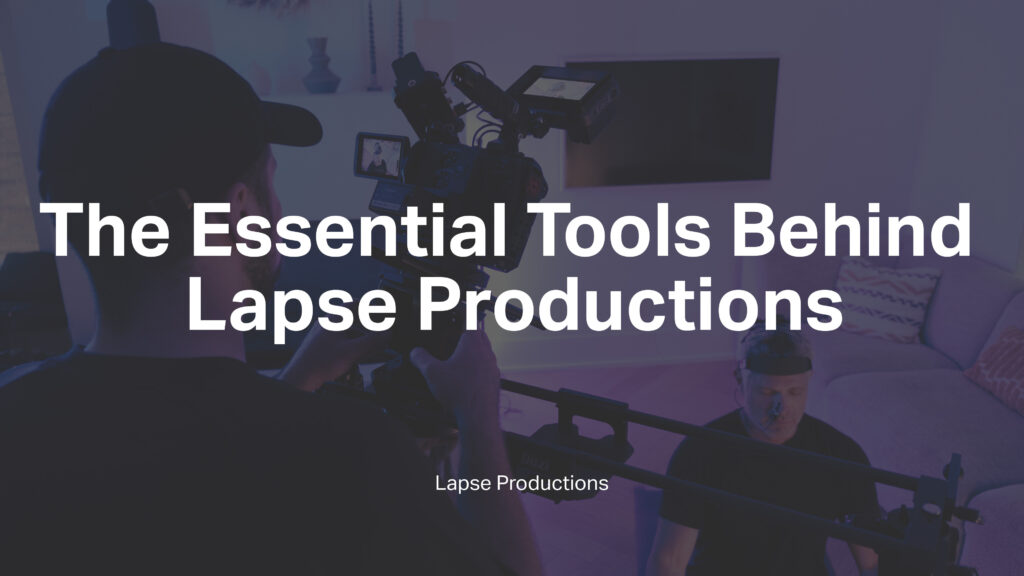Ultimate Guide to the Video Production Process (2024)
Welcome to the comprehensive journey through the video production process, an odyssey from the initial spark of an idea to the final touches that captivate audiences. This guide is your compass through the multifaceted stages of creating compelling video content, breaking down the intricate dance of pre-production planning, the dynamic execution of production, and the meticulous finesse of post-production. Each phase plays a pivotal role in transforming abstract concepts into visual stories that resonate, educate, and entertain. Whether you’re a budding filmmaker or a seasoned professional seeking to refine your craft, this exploration offers valuable insights, practical tips, and a deeper understanding of the art and science behind video production. Join us as we unveil the secrets of crafting stories that not only reach the screen but also touch the heart.
- Understanding the Video Production Process
- What is Pre-Production?
- Key Steps in the Pre-Production Process
- Why Pre-Production Matters
- Production Phase
- The Filming Process: Capturing Your Vision
- An In-depth Look at an Average Corporate Production Day
- Visualizing Your Success: A Look at a Finished Product
- Challenges and Solutions: Navigating Production Hurdles
- Wrap-Up and Transition to Post-Production: Sealing the Deal
- Post-Production Phase
- Editing: Crafting the Story
- Sound Design: Bringing the Story to Life with Audio
- Color Grading and Correction: Painting with Light
- Visual Effects (VFX): Elevating the Narrative Beyond Reality
- Review and Revisions: Perfecting the Final Product
- Finalizing and Delivery: Ready for the Spotlight
- Conclusion: Mastering the Art of Video Production
- Let's Create Your Video Today
- Frequently Asked Questions
Understanding the Video Production Process
The video production process is a creative and technical journey that transforms an initial concept into a final video product. This journey is typically divided into three main stages, each with its distinct focus, challenges, and set of skills.
- Pre-Production: This initial phase is all about planning and preparation. It involves conceptualizing the video, scripting, storyboarding, casting, scouting locations, and organizing all the logistics needed for the shoot. Think of pre-production as the blueprint phase, where solid foundations are laid for the entire project.
- Production: The production phase is where the action happens. It’s the actual shooting of the video, based on the plans laid out in pre-production. This stage is characterized by camera work, lighting, directing, and capturing sound, bringing the script and storyboard to life.
- Post-Production: After the cameras stop rolling, the post-production phase begins. This is where the video is edited, sound is mixed, effects are added, and color grading is applied to enhance the visual appeal. Post-production is crucial for shaping the raw material into a cohesive and engaging story.
Understanding these stages is essential for anyone involved in video creation, as each phase requires careful attention to detail, collaboration among creative professionals, and a deep understanding of the end goal. By exploring each segment in detail, we’ll uncover the intricacies of creating compelling video content that resonates with audiences.
What is Pre-Production?
Pre-production marks the initial stage in the video production process, serving as the planning and preparatory phase that precedes any actual filming. This pivotal stage involves a series of steps designed to ensure that every aspect of the video project is meticulously mapped out, from the initial concept and scriptwriting to scheduling, budgeting, and logistical arrangements.
Role and Importance:
The role of pre-production cannot be overstated. It functions as the blueprint for the entire video production process, guiding every decision and action that follows. During this phase, creative ideas are refined and developed into actionable plans, resources are allocated, and potential challenges are identified and mitigated. This careful planning ensures that the production phase runs smoothly, effectively, and within budget.
Pre-production is crucial for several reasons:
- Vision Alignment: It ensures that the project’s goals, message, and creative vision are clearly defined and understood by the entire production team.
- Efficiency and Cost-effectiveness: By addressing potential issues beforehand, it helps avoid costly mistakes and delays during production and post-production.
- Quality Assurance: Detailed planning during pre-production directly impacts the quality of the final video, ensuring that the end product is engaging, visually appealing, and on message.
In essence, pre-production lays the foundation for successful video production. It’s where strategic planning meets creative vision, ensuring that the project is well-positioned to achieve its objectives and resonate with its intended audience.
Key Steps in the Pre-Production Process
The pre-production phase is composed of several critical steps, each contributing to the project’s success. Here’s a breakdown of these essential stages:
1. Concept Development
- Brainstorming: Begin with a broad brainstorming session to generate a wide range of ideas. Consider using techniques like mind mapping to explore different angles and themes.
- Refinement: Narrow down the ideas based on feasibility, impact, and alignment with the client’s goals and the target audience’s interests. This stage involves critical thinking and collaboration to refine the concept into a solid, workable idea.
- Alignment: Ensure the final concept aligns with the client’s objectives and resonates with the intended audience. This alignment is crucial for the project’s relevance and success.
2. Booking the Crew
When the Production Date is set that is when we will start booking crew members. Freelancers that accept the project will be sent a contract (which includes an NDA) that they will need to sign. We use a highly curated list of creatives for our projects. If you are interested in learning more about the different roles that each crew member plays then check this article.

3. Location Scout
- Finding the Perfect Location: Look for locations that best suit the video’s theme, narrative, and aesthetic needs. Consider both practical and artistic aspects.
- Considerations: Pay attention to lighting conditions, space for equipment, and the need for permits or permissions. The right location can add depth and authenticity to the narrative. During location scouting, a Lapse Productions producer will consider practical factors such as:
- Lighting conditions;
- Suitable shooting spots;
- Noise levels;
- Accessibility;
- and whether the space can comfortably accommodate our cast and crew.
- We will also be capturing LiDar scans of the areas to share with our crew along with solar tracking readings.
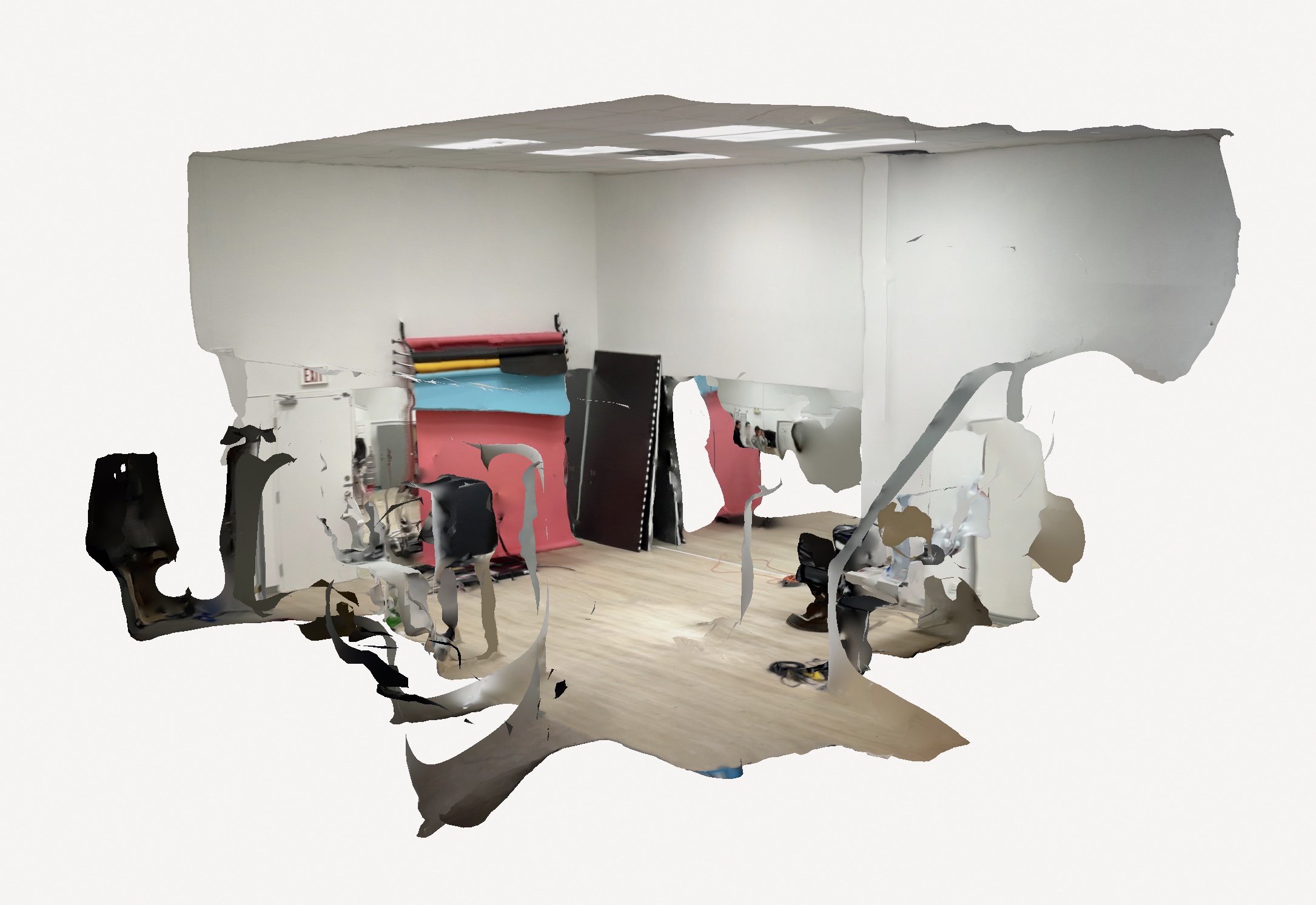
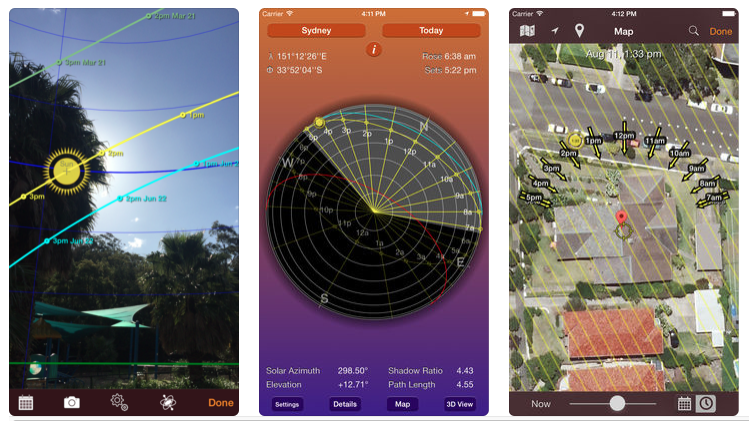
4. Scripting & Storyboarding & Shotlist
Scriptwriting
- Narrative Development: Start by outlining the narrative structure, including the beginning, middle, and end. Develop a storyline that effectively conveys the message while engaging the audience.
- Dialogue Creation: Write dialogue that sounds natural and conveys the characters’ personalities and the story’s nuances. Keep the target audience in mind to ensure the script resonates with them.
- Blueprint for Production: The script serves as the project’s blueprint, detailing every visual and auditory element. It’s essential for guiding the production team and ensuring coherence in the storytelling.
Storyboarding
- Visual Planning: Storyboards visualize the script through a series of sketches or digital images, representing each shot and sequence.
- Benefits: They help plan the shots, understand the visual flow, and communicate the director’s vision to the team. Storyboarding is invaluable for pre-visualizing the project and ensuring efficient shot planning and sequencing.
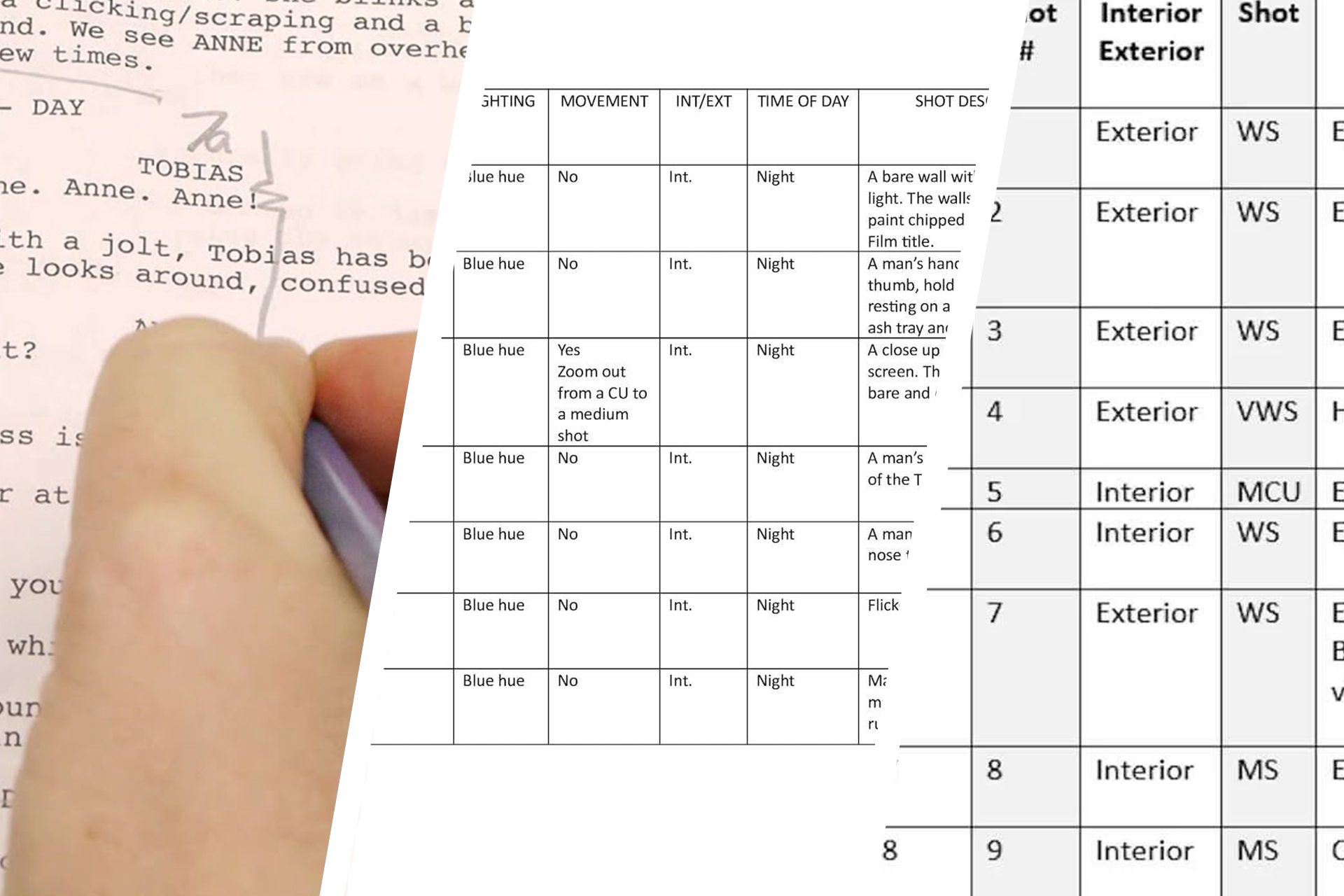
5. Casting
- Talent Selection: Casting involves selecting actors or participants who best embody the characters or message of the video. Consider auditions and screen tests to evaluate fit and performance capability.
- Impact on Effectiveness: The right casting choices can significantly enhance the video’s authenticity and emotional impact, making the selection process critical.
6. Talent Preparation
A lot of the time, we have the Client provide their own employees for our videos (this is because we create a lot of B2B corporate videos). What we do in this situation is create a Talent Preparation Brief for them. This document goes over appropriate attire, how to prepare for a Teleprompter shoot, correct posture, and much more!

7. Scheduling
- Detailed Planning: Create a detailed schedule outlining each production phase, including shooting days, locations, and specific scenes or shots.
- Efficiency Tools: Utilize scheduling software or tools to manage time effectively, ensuring that the production stays on track and adapts to any unforeseen changes.
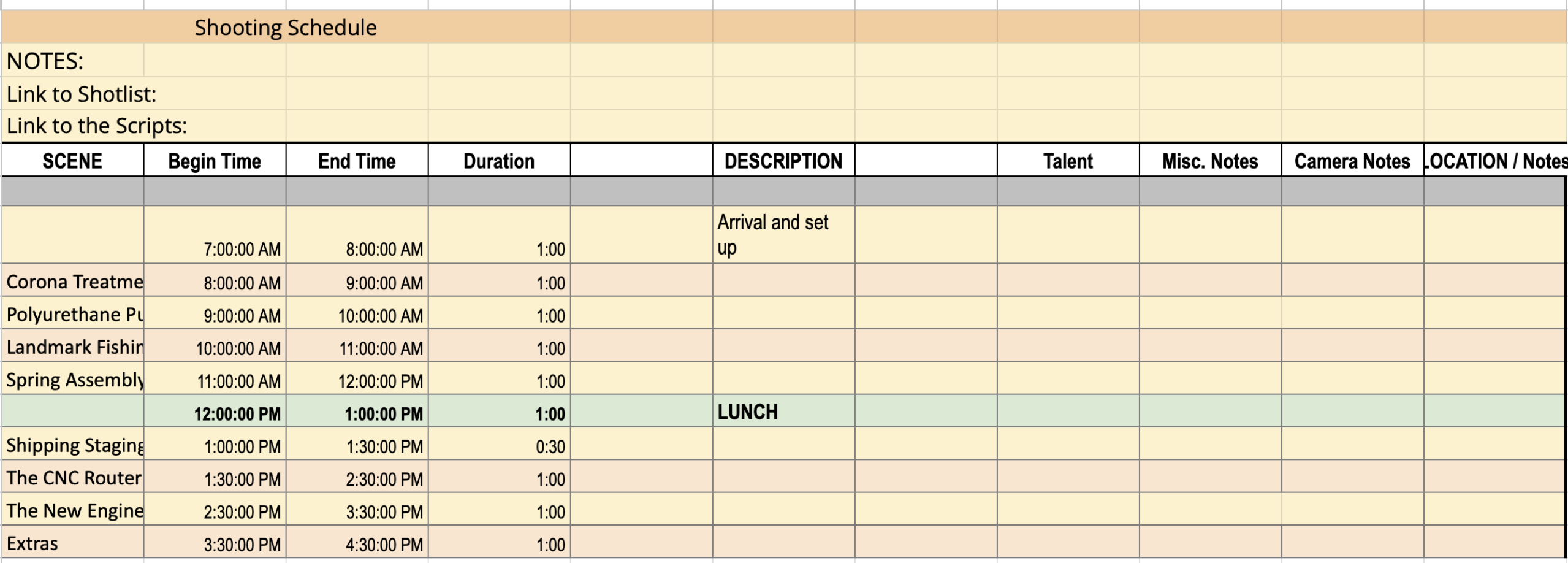
8. Preparing the Crew
At different stages of the process, crew members are updated with information regarding the project. This is because their input is valuable to the production in many ways. For example:
- The cinematographer needs to know exactly what will be filmed because s/he will determine its feasibility or complexity.
- The grip or gaffer can provide the cinematographer with advice on camera set ups and equipment that may need to be rented to achieve the cinematographer’s goals.
- The audio operator will need to know what equipment to bring and if the sound will create problems in the editing process.
- The makeup artist needs to know how many people she will need to fix and in which succession because she can provide the Producer with how much time she will need per person. She also needs to see reference photos of the talent to know how to prepare for them.
- The Production Assistant is usually someone that is getting their foot in the industry so they just need to be updated on what their role for that day will be.
Why Pre-Production Matters
Pre-production is often the unsung hero of video production, a phase where strategic foresight and meticulous planning translate into tangible benefits throughout the project lifecycle. Its significance cannot be overstated, as it directly influences the efficiency, cost-effectiveness, and overall quality of the final video.
Benefits of Thorough Pre-Production Planning:
- Cost Savings: Effective pre-production identifies potential financial pitfalls before they occur, allowing for budget adjustments and smarter resource allocation. By planning meticulously, unnecessary expenses can be avoided, ensuring that the project remains within budget without compromising on quality.
- Time Efficiency: A well-executed pre-production phase streamlines the entire production process. Scheduling conflicts, logistical errors, and unanticipated challenges can significantly delay a project. Pre-production planning mitigates these risks, ensuring that timelines are realistic and adhered to.
- Quality Enhancement: The quality of the final video is significantly influenced by the decisions made during pre-production. This phase allows for creative exploration, theme development, and narrative structuring, which are crucial for producing compelling content. Additionally, it ensures that technical considerations, such as lighting and sound, are addressed early on, enhancing the overall production value.
Production Phase
The success of the production phase hinges not only on your vision and planning but also on the tools and talents at your disposal. Here’s how to assemble the right mix of equipment and crew for your project:
- Selecting the Right Equipment: Your toolkit should include high-quality cameras, lenses for various shot types, lighting to set the mood and enhance visuals, and audio equipment to capture clear sound. Don’t forget about any specialized gear, like stabilizers or drones, that can elevate your production value.
- Assembling the Crew: Behind every great film is an even greater team. Key positions include the Director, who brings the vision to life; the Cinematographer, responsible for the visual aspects; Sound Engineers, who ensure the audio quality; and various other roles such as Production Assistants, Gaffers, and Makeup Artists, each contributing their expertise to the project.
- The Role of Collaboration: Emphasize the importance of collaboration among crew members, fostering an environment where creativity and efficiency thrive. Effective communication and a shared commitment to the project’s vision are crucial for a smooth production phase.
By carefully selecting your equipment and assembling a skilled, cohesive crew, you’re setting the stage for a production phase that not only runs smoothly but also brings out the best in your creative vision.
The Filming Process: Capturing Your Vision
With meticulous planning behind you and the right team and tools at your side, the filming process becomes the stage where your vision starts to materialize. Here’s a streamlined approach to ensure successful shoots:
- Setup and Lighting: Begin each day with a thorough setup of your scenes. Lighting plays a pivotal role in setting the tone and mood of your shots, so take the time to get it right. Use natural light to your advantage and augment with artificial lights for consistency and effect.
- Directing Actors and Managing the Set: Effective direction is key to eliciting the best performances from your actors. Maintain open communication, offering clear, concise guidance. Simultaneously, managing the set efficiently ensures that every aspect of the production moves smoothly, from scene transitions to keeping track of time.
- Shooting Scenes: Approach each scene with a clear strategy. Consider coverage, angles, and the continuity of visual storytelling. Shooting out of sequence is common, so maintain detailed notes and a checklist to ensure nothing is missed.
- Problem-solving on the Fly: No matter how well you plan, unexpected challenges will arise. Adaptability and quick thinking are essential, whether dealing with technical difficulties, environmental issues, or schedule changes. Encourage a team atmosphere where everyone feels empowered to contribute solutions.
- Ensuring Quality: Monitor footage regularly to ensure it meets your standards. Pay attention to the nuances of performance, lighting, and sound. Regular checks help avoid costly reshoots and ensure the integrity of your vision.
The filming process is both demanding and rewarding. With a focus on preparation, communication, and flexibility, you can navigate this phase effectively, capturing the essence of your story and bringing your vision to life.
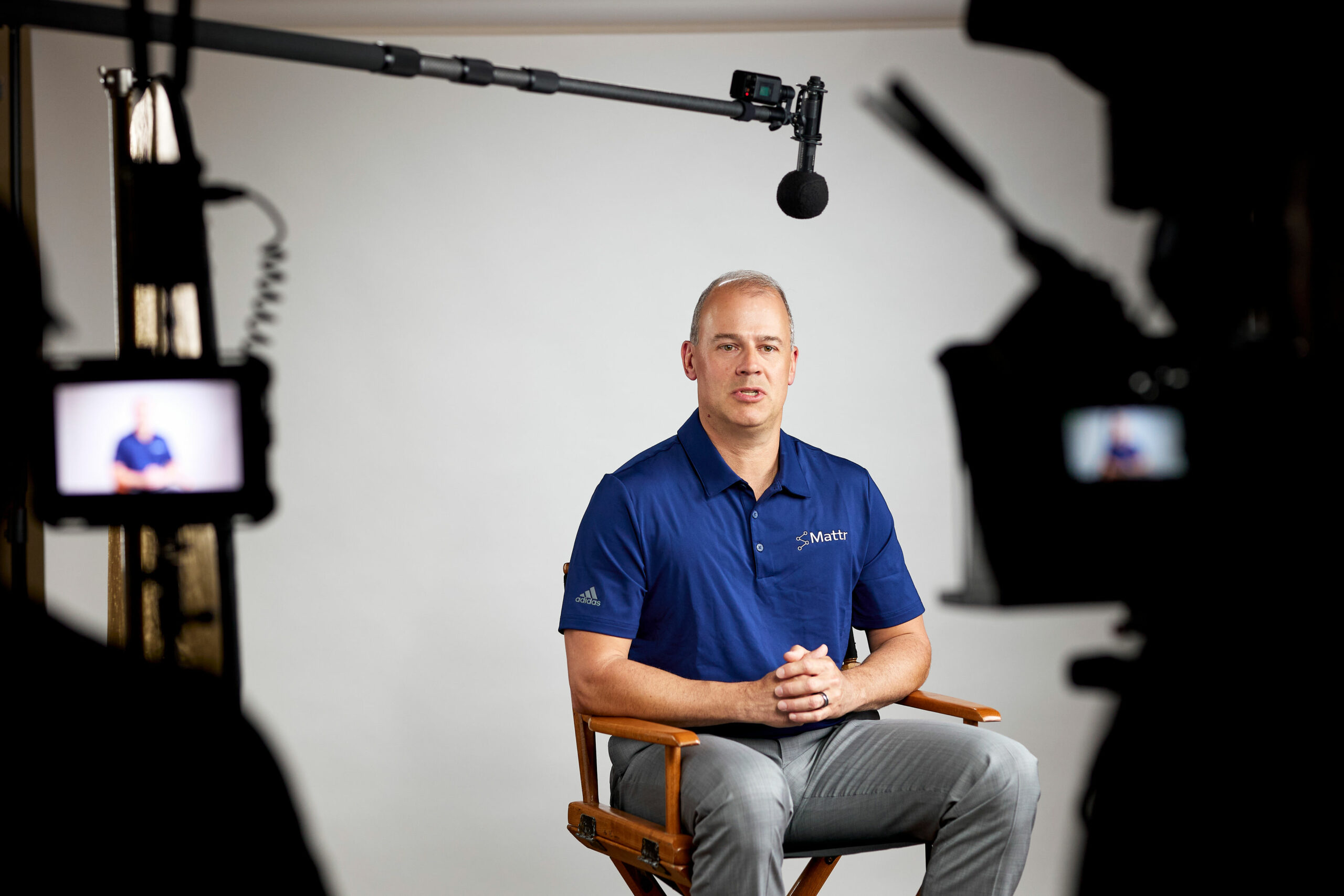
An In-depth Look at an Average Corporate Production Day
Delving into the typical flow of a corporate production day sheds light on the meticulous planning and coordination required to execute a successful shoot. From the initial arrival to the final wrap-up, every moment is calculated to maximize productivity while maintaining the highest quality standards. Here’s a detailed breakdown:
- Arrival on Location: The day kicks off with the crew arriving on location. This initial phase is critical for assessing the space, determining the setup needs, and starting the day on a positive note. The goal is to be efficient and ready for the tasks ahead.
- Setup (1-2 Hours): Setting up is a comprehensive process that typically takes between 1 to 2 hours, with 2 hours being the standard for an interview setup. This phase includes arranging the lighting, sound equipment, and camera angles meticulously to ensure the best possible recording conditions. The setup time is crucial for creating an environment that looks professional and is conducive to capturing high-quality video and audio.
- Makeup (30-45 Minutes): Makeup application varies depending on the requirements of the shoot. For full makeup, approximately 30-45 minutes are allocated to ensure that everyone in front of the camera looks their best. For light touch-ups, a quicker 15-minute session suffices. This step is vital for enhancing the visual appeal and professionalism of the participants.
- 1-Hour Lunch Break (Typically 11-12 PM): The lunch break is an essential hour of respite for the crew, offering a chance to relax, recharge, and prepare for the remainder of the shoot. It’s a time to reflect on the morning’s progress and plan for the afternoon’s schedule.
- Backup of Footage During Lunch: Utilizing the lunch break efficiently, the team ensures that all morning footage is backed up. This crucial step protects the day’s work against any unforeseen technical issues and provides peace of mind as production continues.
- Striking Down Equipment (30-45 Minutes): As the day concludes, approximately 30 to 45 minutes are dedicated to carefully dismantling and packing up the equipment. This process, known as striking, is done with care to ensure that all gear is accounted for, organized, and ready for the next production day or to be returned to the rental company if applicable.

An average corporate production day is a blend of art, technical skill, and precise timing. Each phase, from setup to wrap-up, is orchestrated to ensure that every aspect of the production is executed flawlessly, reflecting the professionalism and dedication of the team behind the camera.
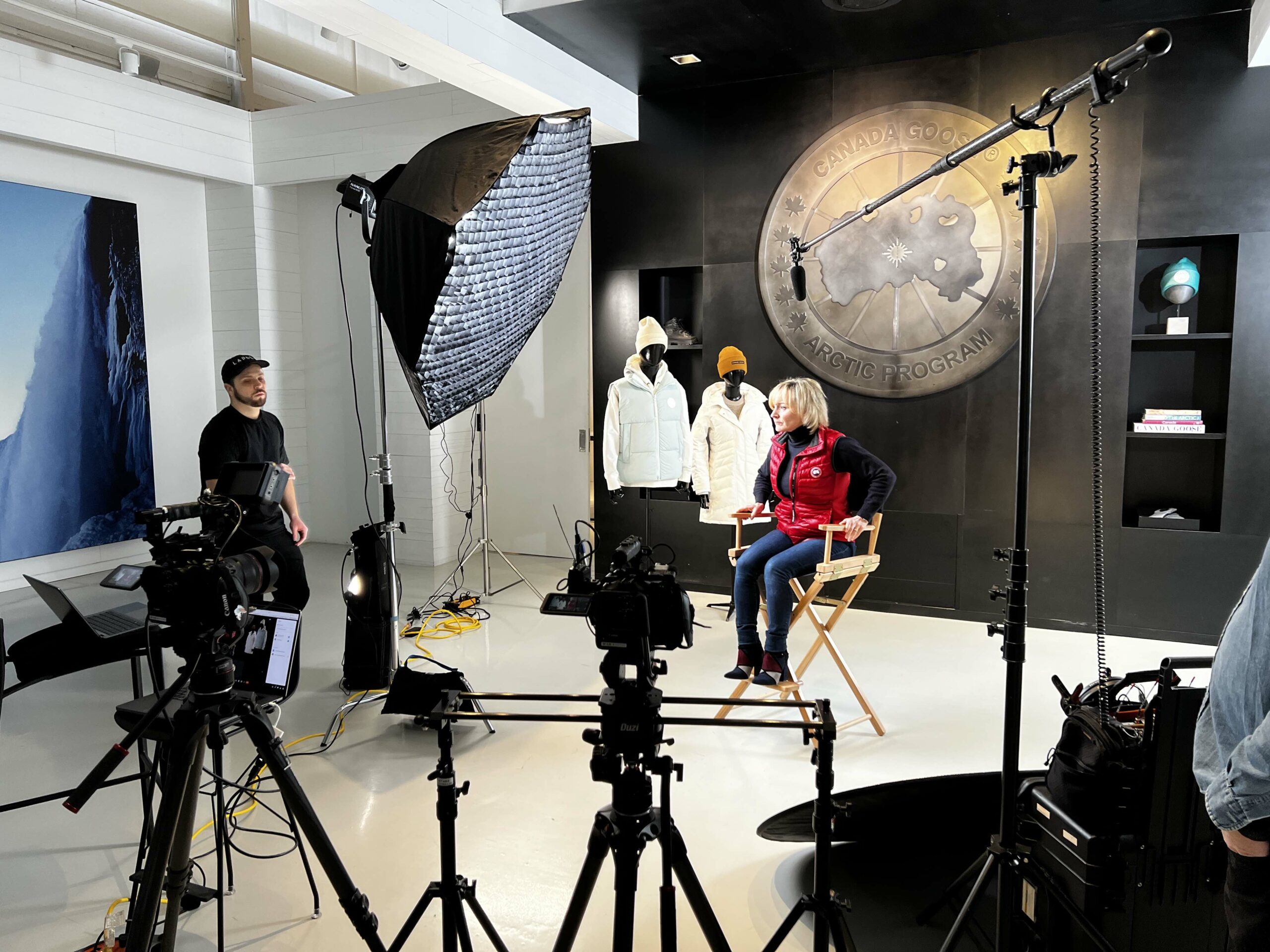
Visualizing Your Success: A Look at a Finished Product
Imagining the end result of your video production efforts can be both inspiring and enlightening. To help bring this vision to life, let’s explore an example from our portfolio that exemplifies what your project could achieve.
Promotional Videos
Explainer Videos
Product Videos
Event Videos
Challenges and Solutions: Navigating Production Hurdles
Every film production encounters its share of challenges, but foreseeing potential issues and knowing how to tackle them can make all the difference. Here are some common hurdles and strategies for overcoming them:
- Weather and Environmental Conditions: Outdoor shoots are at the mercy of the elements. Have contingency plans like alternative indoor locations or flexible shooting schedules. Protective gear for equipment and crew can also mitigate weather-related disruptions.
- Technical Glitches: Equipment failure is not uncommon. Regular checks and maintenance, along with having backup gear, ensure you’re never left in a lurch. Familiarize the crew with troubleshooting basic problems to minimize downtime.
- Scheduling Conflicts: Juggling locations, actor availability, and crew schedules can lead to conflicts. Clear communication, advance scheduling, and a bit of flexibility can help navigate these issues. Consider buffer days in your schedule for unforeseen delays.
- Budget Constraints: Financial surprises can strain production. Meticulous budgeting and a contingency fund can safeguard against unexpected expenses. Being creative with resources, like optimizing locations or borrowing props, can also stretch your budget further.
- Creative Differences: Diverging visions between team members can lead to conflict. Encourage open dialogue and maintain a focus on the project’s goals. Sometimes, a fresh perspective can enhance the project, so consider all feedback carefully.
Facing these challenges head-on with preparedness, flexibility, and creativity ensures your production not only survives these hurdles but also thrives, producing content that is both high-quality and true to your vision.
Wrap-Up and Transition to Post-Production: Sealing the Deal
As the production phase nears its conclusion, ensuring all your hard work is properly wrapped up and ready for the next stage is crucial. Here’s how to efficiently transition from production to post-production:
- Ensuring All Necessary Footage is Captured: Before disassembling sets and releasing cast and crew, double-check that every scene, angle, and piece of necessary footage has been captured. This is the time for pick-up shots or reshoots if something was missed or needs improvement.
- Dailies and Review: Throughout the production phase, reviewing dailies can give you an immediate sense of the footage’s quality. At the end of production, a comprehensive review ensures that you have all the required material, and it meets your standards.
- Organizing and Backing Up Footage: Organize your footage methodically, labeling each file clearly. Back everything up on multiple drives or cloud storage to safeguard against data loss. This organization will be invaluable during the editing process.
- Debrief with Your Team: Hold a wrap-up meeting with your key crew members to discuss the production phase. This is an opportunity to celebrate successes, address challenges faced, and gather feedback for future projects.
- Prepping for Post-Production: With all footage secured, begin outlining the post-production timeline. This includes editing, sound design, visual effects, and color grading. Ensure all team members involved in post-production are briefed on the project’s vision and timelines.
Successfully wrapping up the production phase and transitioning smoothly into post-production sets the stage for bringing your project to its final form. It’s a moment to reflect on the journey thus far and prepare for the creative tasks ahead.
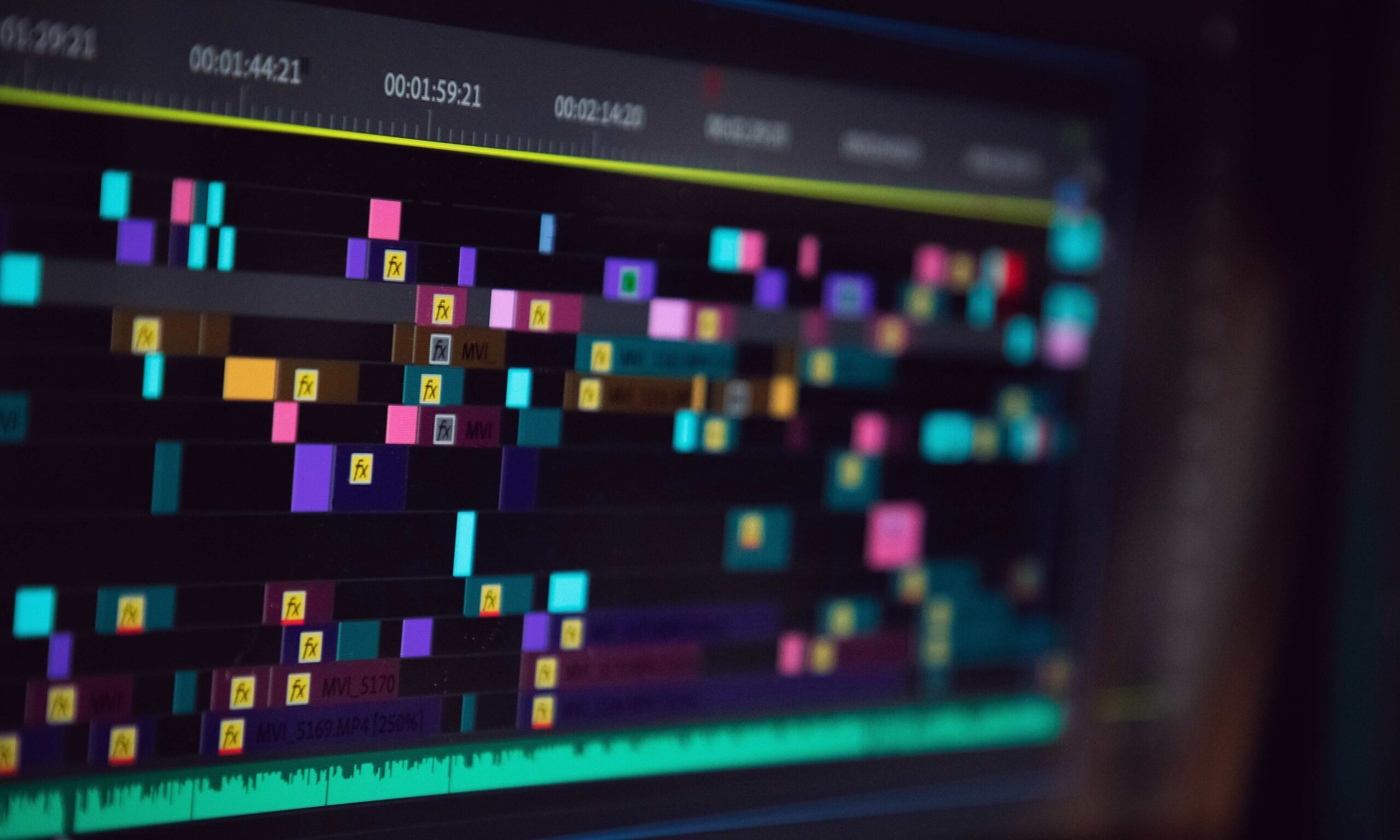
Post-Production Phase
Post-production is the final stage of the video production process, a creative and technical marathon where the project comes together. This phase encompasses several key components, each with its own set of skills, tools, and objectives, working in harmony to craft the final product. Here’s what it involves:
- Editing: The cornerstone of post-production, editing involves selecting the best footage and arranging it to tell the story effectively. This process determines the flow, pace, and ultimately, the impact of the video, making it resonate with the audience.
- Sound Design: Often underestimated, sound design is crucial for setting the scene and conveying emotion. It encompasses everything from cleaning up dialogue to adding sound effects and music, enriching the narrative and immersing the viewer in the video’s world.
- Color Grading and Correction: This step enhances the visual appeal of the video, ensuring consistency across shots and setting the tone and style through color. It’s where the visual mood is fine-tuned, aligning the imagery with the story’s emotional arc.
- Visual Effects (VFX): From subtle enhancements to grand visual spectacles, VFX can be used to create elements that are impossible or impractical to capture on camera. It’s a powerful tool for expanding the video’s visual narrative.
Each of these components plays a vital role in the post-production process, contributing to the creation of a cohesive, engaging, and polished final product. Through the careful integration of editing, sound design, color grading, and visual effects, post-production turns the raw material captured during production into a compelling story ready to be shared with the world.
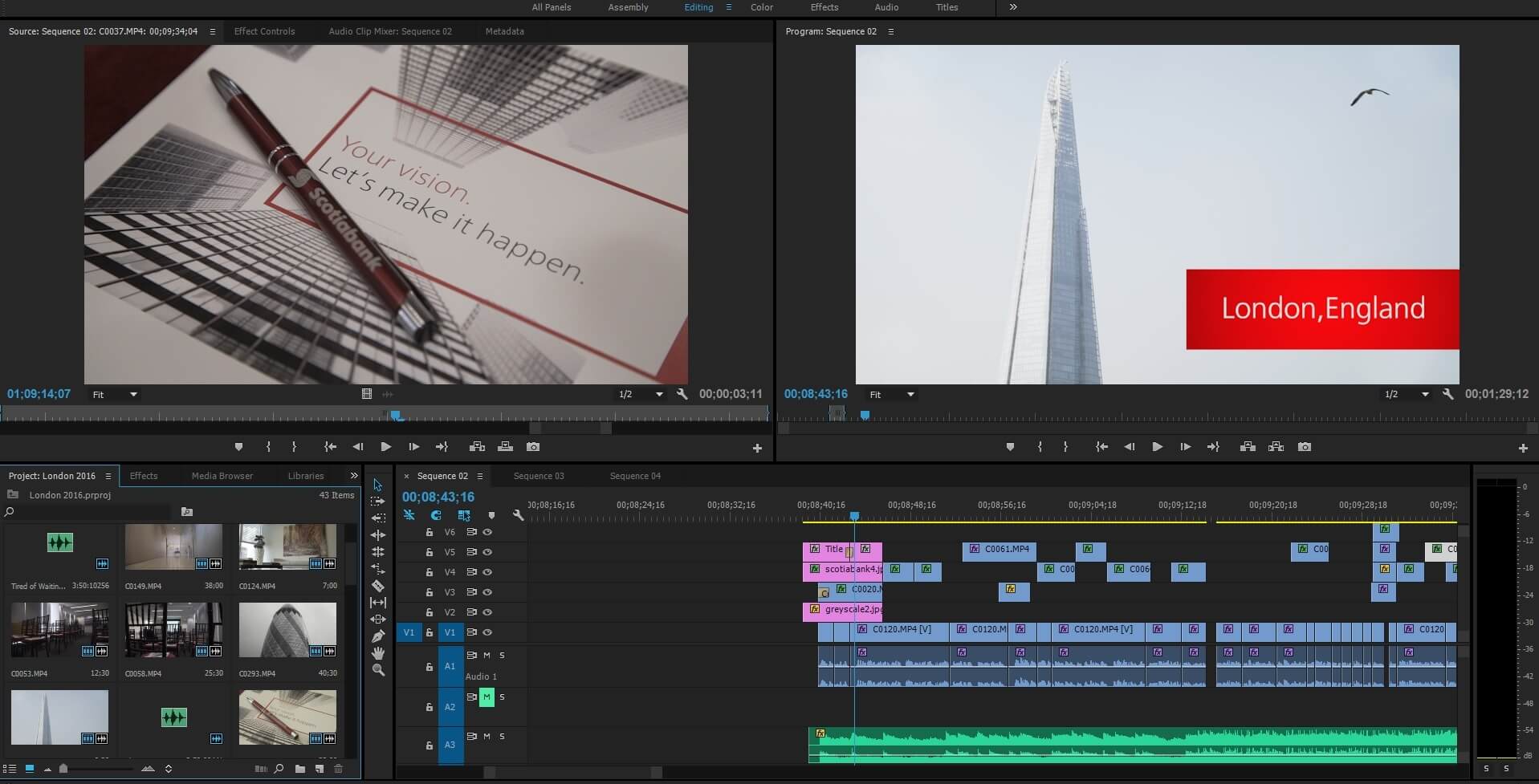
Editing: Crafting the Story
At the heart of post-production lies the editing process, where the raw footage is transformed into a cohesive narrative. This stage is not just about cutting and joining clips but about storytelling, pacing, and creating an emotional journey for the audience. Here’s what the editing process entails:
- Assembling the Footage: The first step is to go through all the footage, selecting the best takes and arranging them according to the storyboard or script. This rough cut forms the backbone of the narrative, laying out the story’s structure.
- Narrative Flow and Pacing: Editing is an art form that balances the dynamics of the story, ensuring a rhythm that keeps the audience engaged. Editors work to maintain continuity, build tension, and provide relief at just the right moments, guiding the viewer through the narrative.
- Transitions and Effects: Strategic use of transitions and effects can enhance the storytelling, creating seamless connections between scenes or highlighting key moments. However, the key is subtlety; the best edits are those that go unnoticed, serving the story rather than distracting from it.
- Collaboration with Directors and Producers: Editing is a collaborative process, involving feedback and revisions from the director, producer, and sometimes other stakeholders. This iterative process ensures that the final edit aligns with the project’s vision and objectives.
- The Role of the Editor: Beyond technical skills, a good editor brings a deep understanding of storytelling, rhythm, and audience engagement. They are storytellers in their own right, with the power to shape the viewer’s experience through the pace, flow, and emotional impact of the video.
Editing is where the magic of cinema comes to life, turning hours of raw footage into a story that moves, entertains, and inspires. It’s a meticulous and creative process that lies at the core of post-production, essential for realizing the vision of the film or video project.

Sound Design: Bringing the Story to Life with Audio
Sound design is an integral component of post-production that goes far beyond simply adding background music or sound effects. It’s about crafting an auditory experience that complements the visual narrative, enriches the emotional depth, and immerses the audience in the story’s universe. Here’s how sound design shapes the final video:
- Dialogue Editing and Cleaning: The clarity of dialogue is paramount. Sound designers work meticulously to clean up the recorded dialogue, removing unwanted noise and ensuring each word is heard clearly, maintaining the authenticity and emotion of the performances.
- Sound Effects and Foley: Sound effects and Foley artistry add texture and realism to the video. Whether it’s the subtle rustling of leaves or the impactful roar of an engine, these sounds are crucial for creating a believable and engaging environment.
- Ambient Sounds: Ambient sounds help to establish the setting and mood. The gentle hum of a cityscape or the serene silence of a snowy landscape can transport viewers, making the scene more vivid and relatable.
- Music: Music plays a powerful role in storytelling, capable of conveying unspoken emotions and connecting with the audience on a deeper level. Selecting the right music—whether it’s a rousing score or a gentle melody—can significantly enhance the emotional impact of a scene.
- Mixing and Mastering: The final step in sound design is mixing and mastering, where all audio elements are balanced and integrated into a cohesive whole. This process ensures that dialogue, music, and sound effects are harmoniously blended, with adjustments made for optimal listening across various platforms and devices.
The art of sound design is essential in breathing life into the visual content, creating a multisensory experience that captivates and moves the audience. Through careful attention to audio detail, sound designers play a pivotal role in transforming the video into an immersive and emotionally resonant masterpiece.
Color Grading and Correction: Painting with Light
Color grading and correction are where the visual aesthetics of a video truly come to life, providing filmmakers with the ability to enhance mood, establish time and place, and evoke specific emotions through color. This crucial post-production process involves a blend of technical precision and artistic expression.
- Color Correction for Consistency: The first step, color correction, ensures that every shot matches in terms of lighting, white balance, and color consistency. This is vital for maintaining visual continuity across different scenes and lighting conditions, providing a seamless viewing experience.
- Color Grading for Mood and Style: Following correction, color grading is applied to establish the overall look and feel of the video. This can range from the subtle application of color to enhance natural beauty or the creation of a stylized palette that complements the narrative’s tone. Color grading can transport viewers to another world, signify changes in time, or highlight emotional shifts within the story.
- Tools and Techniques: Advanced software and tools enable colorists to manipulate hues, saturation, contrast, and brightness with precision. Techniques like the use of LUTs (Look-Up Tables) can help achieve specific visual styles or emulate the look of film stocks, contributing to the video’s unique aesthetic.
- The Impact of Color: The psychological impact of color on the audience is profound. Warm tones can evoke feelings of comfort and nostalgia, while cool tones might convey detachment or tension. The strategic use of color grading can significantly enhance the narrative, guiding the viewer’s emotional response to the story.
- Collaboration in the Creative Process: Colorists work closely with directors and cinematographers to ensure the color grading aligns with the directorial vision and cinematography. This collaborative process ensures that the visual tone of the video supports the storytelling from beginning to end.
Color grading and correction are not just about making the video look “better”; they’re about enhancing the storytelling through visual means. This stage of post-production is where the visual identity of the piece is finalized, enveloping the audience in the intended atmosphere and emotion of the story.
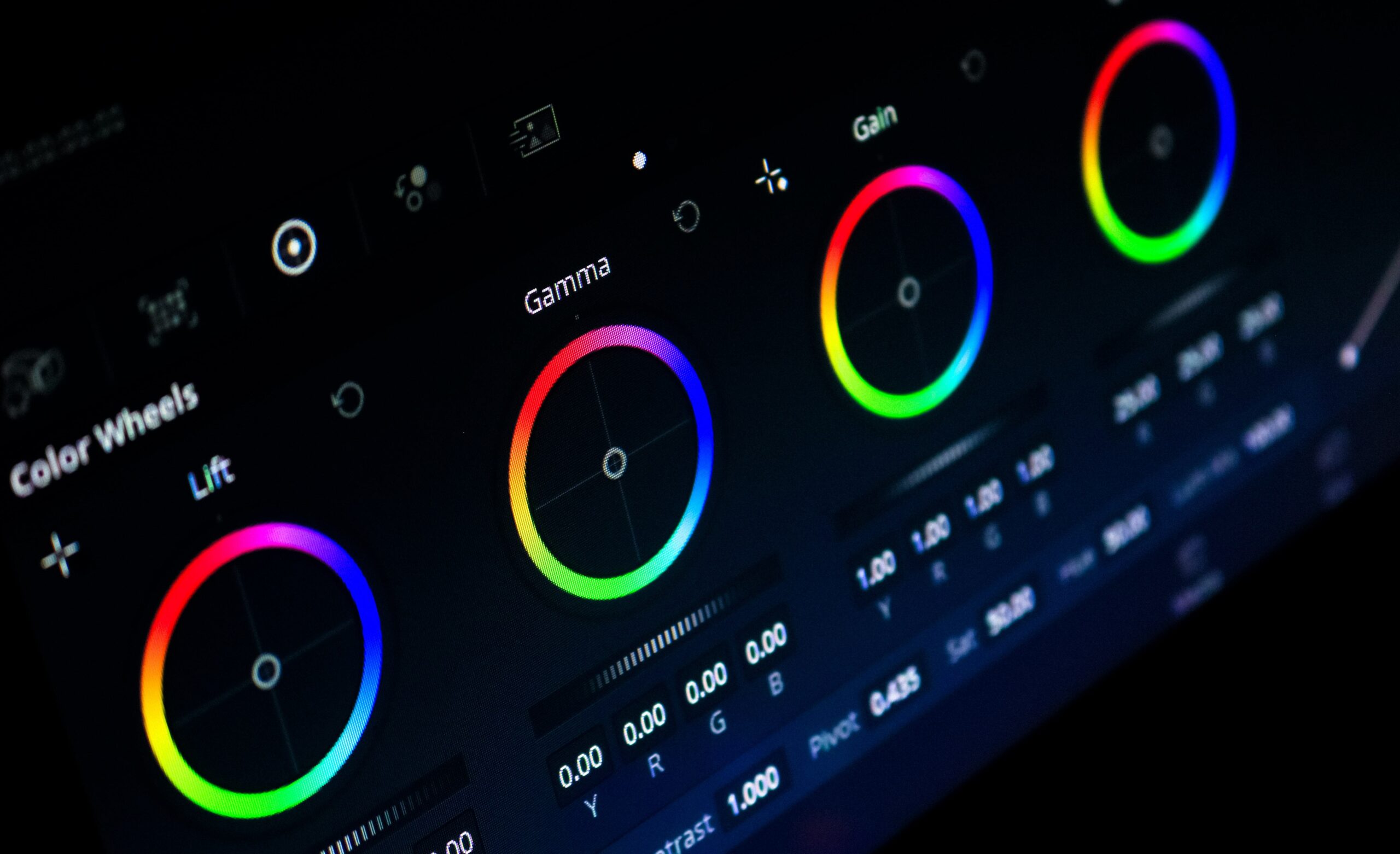
Visual Effects (VFX): Elevating the Narrative Beyond Reality
Visual Effects (VFX) stand at the forefront of innovation in video production, offering filmmakers the tools to create worlds, characters, and phenomena that go beyond the constraints of physical reality. VFX can subtly enhance the narrative or play a central role in storytelling, depending on the project’s demands.
- Enhancement and Creation: VFX can be employed for both enhancing existing footage and creating entirely new elements or environments. From adding realistic weather effects to crafting fantastical creatures, VFX broadens the scope of what’s possible on screen.
- Seamless Integration: The magic of effective VFX lies in its invisibility to the audience. Whether it’s erasing wires and rigs or integrating digital elements into live-action footage, the goal is to support the story seamlessly, without drawing attention away from the narrative.
- Technological Advances: The evolution of VFX technology, including CGI (Computer-Generated Imagery), motion capture, and compositing, has opened up endless possibilities for storytelling. Filmmakers can now bring the most imaginative visions to life with unprecedented realism and detail.
- Collaboration Across Departments: Successful VFX work is highly collaborative, requiring close coordination between directors, cinematographers, VFX artists, and other departments. This teamwork ensures that visual effects enhance the narrative cohesively, matching the director’s vision and the film’s overall aesthetic.
- Balancing Practical and Digital Effects: While VFX can achieve remarkable results, the best outcomes often come from a blend of practical effects captured during production and digital enhancements in post-production. This combination can lend a greater sense of realism and physicality to the final product.
- Storytelling Power: Beyond technical wizardry, the true power of VFX lies in its ability to serve the story. Whether creating immersive worlds or subtle enhancements, the aim is always to deepen the audience’s emotional engagement and belief in the story’s universe.
Visual effects offer a canvas on which filmmakers can paint their most ambitious visions, breaking the boundaries of reality to bring new dimensions to storytelling. In the post-production process, VFX artists work meticulously to ensure these visual elements elevate the narrative, captivating audiences with stories that resonate long after the screen fades to black.
Review and Revisions: Perfecting the Final Product
The journey through post-production is one of refinement and precision, culminating in the review and revisions phase. This critical step involves scrutinizing the nearly completed project, gathering feedback, and making necessary adjustments to ensure the final video aligns with the initial vision and goals.
- Initial Reviews: The process begins with initial screenings for the director, producers, and key creative team members. This is a chance to assess the video’s overall flow, performance, and alignment with the project’s objectives.
- Feedback and Collaboration: Constructive feedback is essential, providing insights and perspectives that may have been overlooked. Collaboration during this phase is key, as it often requires balancing differing opinions to refine the video in a way that satisfies all stakeholders.
- Technical and Creative Revisions: Revisions can range from minor edits, such as trimming scenes for pacing, to significant changes, like reworking sound design or adjusting color grading. Each revision is aimed at enhancing the storytelling, visual appeal, and emotional impact of the video.
- Iterative Process: Review and revisions can be an iterative process, with several rounds of feedback and adjustments. The goal is to progressively refine the video until all parties are satisfied with the final product.
- Final Approval: Once the video undergoes thorough review and all necessary revisions are made, it moves to final approval. This is the moment when the video is deemed complete and ready for rendering and delivery.
The review and revisions phase is a testament to the collaborative nature of video production, highlighting the importance of feedback, expertise, and the shared goal of creating a compelling and polished final product. It’s a process that demands patience, open-mindedness, and a commitment to excellence, ensuring that the final video not only meets but exceeds expectations.
Finalizing and Delivery: Ready for the Spotlight
The culmination of the post-production process is the finalizing and delivery stage, where all elements of the video are rendered together, and the project is prepared for distribution. This phase marks the transition from creation to consumption, ensuring the video is ready to make its mark on the audience.
- Rendering the Final Cut: Once approvals are secured, the final cut undergoes rendering—a process where all visual and audio elements are compiled into a single, high-quality file. This step requires powerful computing resources, as it involves combining edited footage, sound mixes, color-graded images, and visual effects into the final video.
- Quality Checks: Before delivery, the rendered video undergoes rigorous quality checks. This includes reviewing technical specifications, such as resolution, frame rate, and aspect ratio, as well as ensuring there are no encoding errors or glitches. It’s crucial that the video meets the highest standards for viewer experience.
- Exporting in Various Formats: Depending on the distribution channels, the video may need to be exported in multiple formats. Each platform, from broadcast television to online streaming services, has specific requirements for video files. Creating optimized versions for each ensures the best possible playback quality and compatibility.
- Delivery to Clients or Distributors: With the final versions ready, the video is delivered to clients, distributors, or directly to the platforms where it will be viewed. This can involve digital transfers, physical media, or uploads to content management systems, depending on the project’s scope and distribution strategy.
- Archiving: After delivery, it’s important to archive the project files, including raw footage, project files, and final renders. This not only serves as a backup but also allows for future revisions or repurposing of the content.
Finalizing and delivery is a meticulous process that bridges the gap between the creative efforts of the production team and the audience’s experience. It’s the final checkpoint in the video production journey, ensuring that the story crafted with so much care, skill, and creativity is presented in the best possible light, ready to engage, entertain, and inspire viewers.
Conclusion: Mastering the Art of Video Production
As our comprehensive exploration of the video production process comes to a close, we stand at the confluence of creativity, technology, and storytelling. From the visionary groundwork laid in pre-production to the collaborative energy of production, and through the detailed artistry of post-production, we’ve navigated the complex journey that brings stories to life. This process is a testament to the power of visual storytelling, a craft that demands patience, passion, and perseverance. Each phase, with its unique challenges and rewards, contributes to the creation of video content that can inform, inspire, and transform.
Armed with the knowledge of these essential stages, you are now better equipped to embark on your video production ventures, ready to tell stories that resonate with depth and authenticity. Remember, the path from concept to completion is both a science and an art, shaped by the hands and minds of those willing to explore, experiment, and express. May this guide serve as a beacon, illuminating your journey through the vast and rewarding landscape of video production. Here’s to your next project — may it exceed your visions and captivate your audience in ways you’ve yet to imagine.
Let’s Create Your Video Today
If you’re looking for top-notch quality, industry expertise, dependability, and competitive pricing, don’t wait any longer. Contact us now for a quote and let’s get started on your project.





